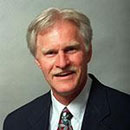Strength training may be the key to longevity. How to do it safely as you age
Published in Senior Living Features
I started strength training about nine years ago for admittedly vain reasons. Fresh off a breakup at the time, weight training offered a welcome distraction and the prospect of a revenge body.
I trained two or three times a week — nothing crazy, just good old fashioned bicep curls, weighted squats, plank holds. But the results were astounding: I lost more than 20 pounds, sculpted my body and had never felt stronger. It was empowering.
Almost a decade later, my weight training is now about being grounded and strong; but the same moderate routine is causing challenges. My elbow barks every time I bicep curl; my SI joint is creaky from sitting all day, which makes my glutes and lower back tight.
Then I sprained my neck and shoulder recently at the gym, which concurrently pinched a nerve. It led to excruciating pain, sleepless nights and an infuriating quest through the medical care system to discover what happened.
"You need to keep those muscles strong because we lose muscle as we age," one nurse warned while checking my blood pressure. "That's how injuries happen."
I couldn't help but see the irony: Attempting to stay strong is what led to the injury in the first place.
My situation provided a clear conundrum: Copious research shows that strength training, particularly for older adults, is a critical piece of the health and longevity puzzle. Strength training builds muscle mass and strength, increases bone density and improves balance, which in turn helps prevent falls. It enhances joint mobility and reduces joint stiffness. It plays a role in metabolic health, reducing blood pressure and improving glucose metabolism. It even aids cardiac health.
"It's probably the most important fitness modality out there for longevity," says Dr. Christina Chen, a Mayo Clinic geriatrician and host of the podcast "Aging Forward."
But also, strength training gets harder to do during the period of life when we need it most. The older we are, the more susceptible to injuries. Decades of a sedentary lifestyle, osteoporosis, arthritis and other conditions can lead to weakened muscles, more fragile bones and unstable, painful joints, not to mention balance issues. All of which can present challenges — or dangers, if training improperly — at the gym.
After my own injury, I set out to make sense of these two realities. And one thing became certain: The benefits of strength training, even for those in their golden years, still outweigh the risks.
"Every intervention has a risk associated with it, and exercise is no exception," says Dr. Joshua T. Goldman, a UCLA sports medicine physician. "If you sit in your house in a bubble, you won't have exercise risks, but you'll die of heart disease and diabetes or some other disease. The aging population is at risk of getting injured more in general, but it's certainly very possible to gain muscle as we age. It's just that more goes into it. You have to be smarter about how you train."
It's not a matter of simply weight training as you age, it's about proper execution, too. So I spoke to doctors, researchers and physical trainers for crucial tips on how to gain muscle without getting injured.
1. Start low, slow and supervised
If you're new to weight training, supervision is key, says Goldman. Work with a personal trainer or a friend who's knowledgeable. They'll keep an eye on your form and give you real-time feedback. And proceed with caution: Begin with low weights and just a few repetitions. There's benefit to lifting even two or three pound weights, in sets consisting of just six or eight repetitions.
"Start with someone who understands progressions and increases in load, which is a huge risk of injury for young and old alike," Goldman says. "Progress slowly. It's not a race."
2. Keep a journal
What does "start low and slow" even mean? It's different for everyone, says Casey Johnston, author of the weightlifting newsletter "She's a Beast." Find the starting point that's right for you and then progress based on how your body feels.
"You can't tell everybody to lift 20 pounds — for some that's impossible and others, easy," Johnston says. "The important thing, is: Where is that person at in their general health and training life — have they recently been sick? Did they eat breakfast? — all of these things can affect your experience of a workout. So a huge part of it is learning what different stimuli feel like and monitoring how you respond."
Towards that end, Johnston suggests weight-training newcomers keep a journal. Record what you did at the gym and how you felt both during and after the workout, including your level of soreness the next day. For each exercise, note how heavy the weight was, how many repetitions you did and how many sets. Rate sets on a scale of one to 10, with zero being "it feels like no effort at all" and 10 being "I can't do even one more rep."
"It's important to approach it as a practice and as a learning experience," Johnston says, "rather than something you're just supposed to know off the bat."
3. Practice functional fitness
The best way to strength train as you get older, says Chris Ryan, a New York-based certified strength and conditioning specialist who was featured on NBC's "Strong," is through compound movements that mimic everyday life.
"You have to think: What's the goal? For most people, it's living an independent life — you want to be able to do basic things, like reach up to grab a dish, play with your grandchildren," he says. "So: practice squatting or sitting down to a bench or chair and standing back up again and squeezing your butt tight at the top. Do light step-ups a few inches high, mimicking climbing a set of stairs and that also helps with balance control and coordination. Do pulling exercises, like farmer's carries, which helps pull the shoulder blades back, the chest up and keeps the core engaged."
Your body will get smarter, your muscle memory sharp.
"If you can do those things at the gym, you can do those same movements in your regular life," Ryan adds. "Your body will know how to do it because you've practiced it — and your joints and ligaments and tendons will respond because they've already done it with more load at the gym."
4. Warm up and cool down
As we age, the body is less resilient. Our tendons become drier, thinner and less elastic; muscles, in general, become smaller. So warming up before strength training to increase blood flow to the muscles and loosen joints, as well as doing a few minutes of recovery work after exercising — like stretching or foam rolling — is that much more important in order to optimize tissue health. You have to put in the work to do the work, says Dr. Lyndon Joseph, an exercise physiologist and a program officer at the National Institute on Aging, part of the National Institutes of Health.
"Warming up is so important because it helps reduce the risk of injury," Joseph says, adding that warm ups and cool downs don't have to be complicated. He suggests riding a stationary bike, at a low intensity, for 5 or 10 minutes to warm up and doing a few walking laps around the gym, until your heart rate slows, to cool down.
"You don't do a 100-meter dash off the bat," he says. "You jog before you sprint — it's the same with any exercise."
5. Modify
There are myriad ways to strengthen a particular muscle. Minor adjustments in form and using props can alter the level of difficulty of an exercise or diffuse pain. Don't be afraid to make an exercise yours, so that it's more suitable for your body.
"Most older people have some stuff," says UCLA's Goldman. "If you're severely arthritic in both knees, weighted squats are probably not the best plan for you. I'd recommend knee extension and hamstring curl exercises for lower leg strengthening. A stationary bike with high resistance is also a suitable alternative. Work around restrictions and injuries. Work within the stuff you've got."
Cedars-Sinai's Gulati notes the many different forms of strength training beyond the stereotypical image of iron dumbbells or a hulking barbell. She suggests body weight exercises such as push ups — on the floor or even against a wall — as well as planks and lunges. Yoga and pilates, too, offer strengthening benefits, she says, as does less intense Tai Chi.
"You can also use bands, a way to increase resistance over time, and it may not feel like you're lifting a heavy weight but they are tough. Even people with joint problems can do that."
Trainer Ryan suggests aquatics training. "Everything about water is good for the human body," he says. "It's easy on our joints. It's also hard to move through, so there's tension. So just moving back and forth, treading water, deep water running, arm movement patterns — it's all resistance training."
6. Don't be discouraged by pain
Sudden or sharp pain at the gym is not OK. But also don't let preexisting, low-level pain keep you on the couch. An arthritic joint may be uncomfortable to strength train, but inactivity leads to stiffness, which can make pain worse.
Start by working out below the pain threshold, says the NIH's Joseph. Progressively increase the weight and the sets so that you're not experiencing pain throughout the full range of motion.
"Keep it consistent," he says. "And over time, the pain threshold will increase even more."
Training the glutes, hamstrings, quads and core, in particular, can help prevent pain and injuries elsewhere in the body, Johnston adds.
"Deadlifting takes pressure off the lower back — you're learning to bend down properly — and it can be corrective to a lot of the everyday pains that people experience," she says.
7. Be mindful of your heart
Strength training is even better for your heart than previously thought: a 2024 study, authored by Dr. Martha Gulati, director of Preventive Cardiology at Cedars-Sinai, found that women who strength trained two to three times a week reduced their cardiovascular mortality rate by about 30% compared to those who don't.
Nevertheless, proceed carefully, Gulati says. For older adults who are new to weight training — or for those returning to exercise after a long break — Gulati stresses talking to your doctor first and getting an exercise prescription as well as a cardiac screening, especially if you have a preexisting heart condition. Baseline cardiac testing will ensure your heart can tolerate a heavy load.
8. Find what you love and do it consistently
Consistency is crucial to maintaining exercise benefits, says Joseph.
"It's like if you have diabetes, if you stop taking the medication, you'll go back to baseline," he says. "The same is true of exercise. Think of it as a lifestyle change."
To set yourself up for success, choose exercises you enjoy in a milieu in which you feel comfortable.
"Some people don't like going to a gym, or they're intimidated by going to a gym," Joseph says. "So maybe you participate in a community setting, like an exercise group in a park, or do it by yourself at home. If you find pleasure in it, you're more likely to be consistent and keep up with it."
9. Focus on the big picture
Forget vanity. We lose 3 to 8% of our muscle mass per decade after age 30 and the rate of decline increases after age 60 — it's called sarcopenia — and our goal should be to fight that muscle loss, Gulati says.
"Falls can be catastrophic as we age and building our muscle mass is really important," she says. "It's not about becoming a bodybuilder, it's about preserving your health. Just to be healthy and strong is a beautiful thing."









Comments